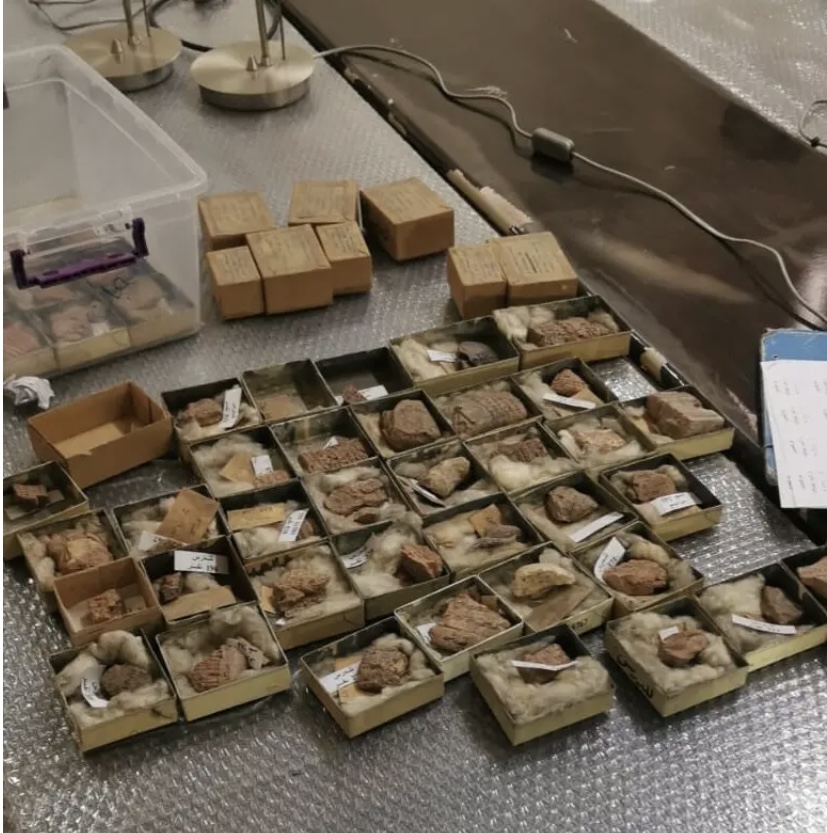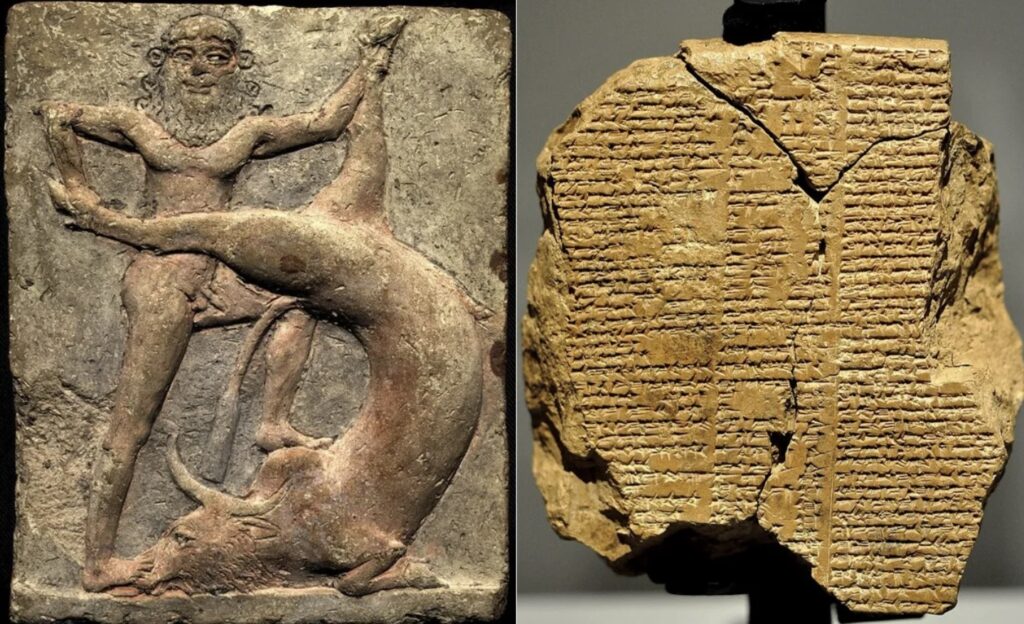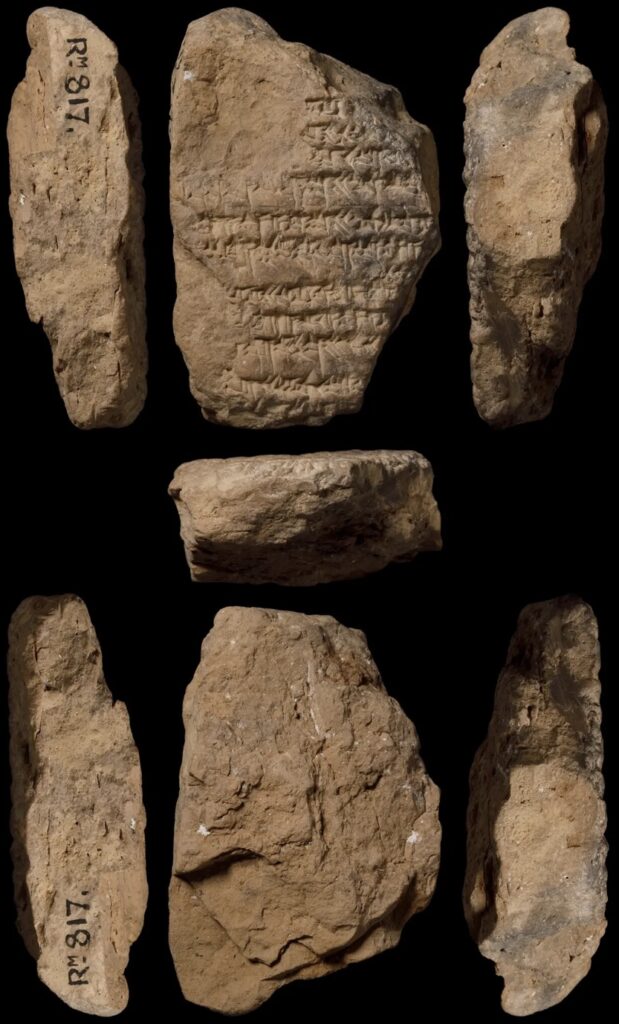ChatGPT:
Piecing Together an Ancient Epic Was Slow Work. Until A.I. Got Involved
The Epic of Gilgamesh, one of the oldest literary texts in the world, has been a subject of fascination and scholarly study for over a century. Discovered in fragments across the Middle East, this ancient epic has taken generations of Assyriologists to piece together. However, even after more than 150 years of painstaking work, about 30% of the text remains missing, leaving significant gaps in the narrative. The advent of artificial intelligence (A.I.) is now transforming this slow and arduous process, allowing researchers to uncover missing pieces of the epic at an unprecedented rate.
📜 The Epic’s Discovery and Early Studies
The story of the modern rediscovery of the Epic of Gilgamesh begins in 1872 with George Smith, an employee at the British Museum. While studying a clay tablet, Smith recognized a passage that resembled the biblical flood story, leading him to realize that he had found a fragment of an ancient epic. This discovery catapulted Smith to fame and marked the beginning of a lifelong quest to recover more fragments of the poem. Over the next few years, Smith made several trips to the Middle East, searching for more pieces of the epic. Unfortunately, his efforts were cut short when he died at the young age of 36.
Smith’s work laid the foundation for the field of Assyriology, the study of the ancient cultures and languages of Mesopotamia. Assyriologists have since recovered thousands of fragments of the Epic of Gilgamesh, which date back more than 3,000 years. These fragments have been found in archaeological digs, museum storerooms, and even on the black market. However, the sheer number of fragments and the complexity of cuneiform script have made it difficult for researchers to piece together a complete version of the epic. As a result, significant portions of the text remain missing, and many fragments remain unread and unpublished.
🤖 A.I. Accelerates the Discovery Process
In recent years, the field of Assyriology has experienced a significant breakthrough thanks to the introduction of artificial intelligence. A project called Fragmentarium, led by Enrique Jiménez of the Ludwig Maximilian University of Munich, is at the forefront of this technological revolution. Using machine learning algorithms, the Fragmentarium team is able to analyze digitized images of tablet fragments and match them with previously identified pieces. This process, which once took years or even decades, can now be completed in a fraction of the time.
Since its inception, the Fragmentarium project has led to the discovery of over 1,500 new fragment matches, including several significant pieces of the Epic of Gilgamesh. Among these discoveries are fragments that add more than 100 lines to the epic, providing new insights into key episodes and characters. For example, one newly discovered fragment reveals that after killing the forest monster Humbaba, Gilgamesh and his companion Enkidu traveled to Nippur, the religious center of Mesopotamia, to appease the god Enlil. Another fragment includes a previously unknown prayer by Gilgamesh’s mother, asking the sun god to guide Enkidu through the Cedar Forest.
🧩 New Insights and Challenges
The new fragments discovered through the Fragmentarium project have added significant depth to the story of Gilgamesh. One of the most intriguing additions is a single word spoken by Utnapishtim, the Noah-like figure who survived the great flood. Utnapishtim tells Gilgamesh that after his workmen built the ark, he “lavished” them with alcohol during a celebratory party. This word, “lavished,” was not previously known and suggests that Utnapishtim may have felt guilty about the impending doom that awaited his workers.
These discoveries have been included in recent English translations of the epic, allowing readers to experience the text in its most complete form yet. However, the constant influx of new fragments also poses challenges for translators. As more pieces of the epic are discovered, the text continues to evolve, making it difficult to create a definitive translation. Sophus Helle, a translator who recently worked on a new edition of the epic, described the process as trying to “paint a model who won’t sit still.”
🏛️ The Future of Gilgamesh Studies
Despite the significant progress made by the Fragmentarium project, there is still much work to be done. Many fragments of the Epic of Gilgamesh and other Mesopotamian texts remain undiscovered, either hidden in museum collections or buried at archaeological sites. Scholars like Jiménez are optimistic that A.I. will continue to play a crucial role in uncovering these lost pieces, allowing for a more complete understanding of Mesopotamian literature and culture.
One of the exciting aspects of the ongoing research is the potential to uncover fragments that have been overlooked or misclassified in the past. For example, a seemingly mundane tablet containing a letter or a legal document might contain quotations from lost literary works. Jiménez’s team is now expanding its work to include collaborations with institutions like The Iraq Museum in Baghdad, where they hope to find even more pieces of Gilgamesh.
🌍 Cultural Significance and Broader Implications
The Epic of Gilgamesh is more than just a literary masterpiece; it is a window into the ancient world of Mesopotamia. The epic’s themes of friendship, mortality, and the quest for immortality resonate across time and cultures. As new fragments are discovered and translated, our understanding of these themes deepens, offering fresh perspectives on the human experience.
The use of A.I. in the study of ancient texts also has broader implications for the field of humanities. By leveraging technology, researchers can overcome some of the limitations of traditional scholarship, such as the scarcity of experts in specialized fields like Assyriology. A.I. can help bridge the gap between the vast amounts of data available and the limited number of researchers capable of analyzing it.
Moreover, the success of the Fragmentarium project highlights the potential for interdisciplinary collaboration in the study of ancient cultures. By combining the expertise of Assyriologists, computer scientists, and museum curators, the project has achieved results that would have been impossible using traditional methods alone.
🧠 Continuing the Legacy of George Smith
The work of the Fragmentarium project is a continuation of the legacy of George Smith and the many Assyriologists who have followed in his footsteps. While Smith’s discovery in 1872 marked the beginning of modern Gilgamesh studies, the use of A.I. represents a new chapter in this ongoing story. As more fragments are discovered and analyzed, scholars are piecing together not just the text of the Epic of Gilgamesh, but also the broader cultural and historical context in which it was created.
In the coming years, we can expect to see even more discoveries that will reshape our understanding of this ancient epic. Whether through A.I. or traditional methods, the search for the missing pieces of Gilgamesh will continue, driven by the same curiosity and determination that motivated George Smith more than a century ago.
🔍 Conclusion
The integration of A.I. into the study of the Epic of Gilgamesh has led to remarkable advancements, uncovering new fragments and offering deeper insights into this ancient text. As the Fragmentarium project and similar initiatives continue to evolve, we can anticipate a future where the Epic of Gilgamesh is more complete and accessible than ever before. This technological revolution in Assyriology not only honors the legacy of early scholars like George Smith but also paves the way for new discoveries that will enrich our understanding of human history and culture.
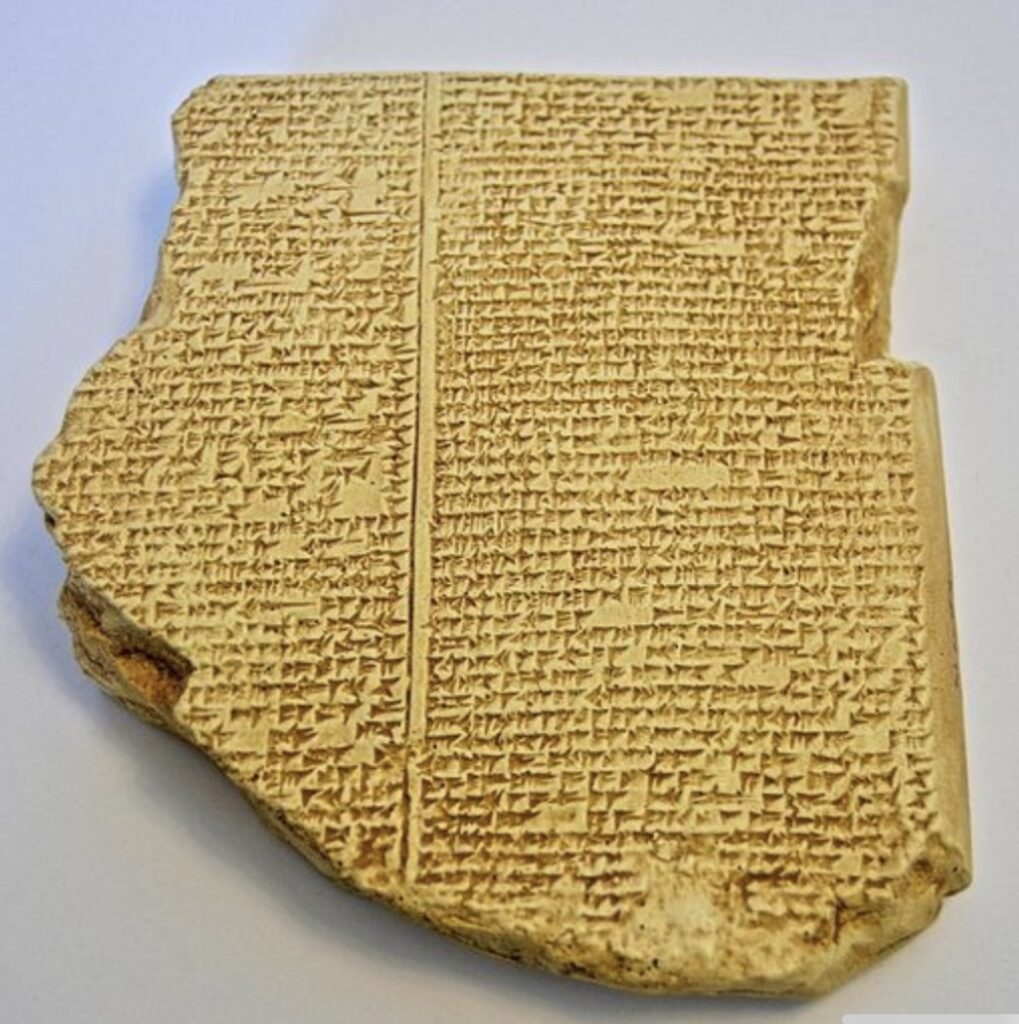
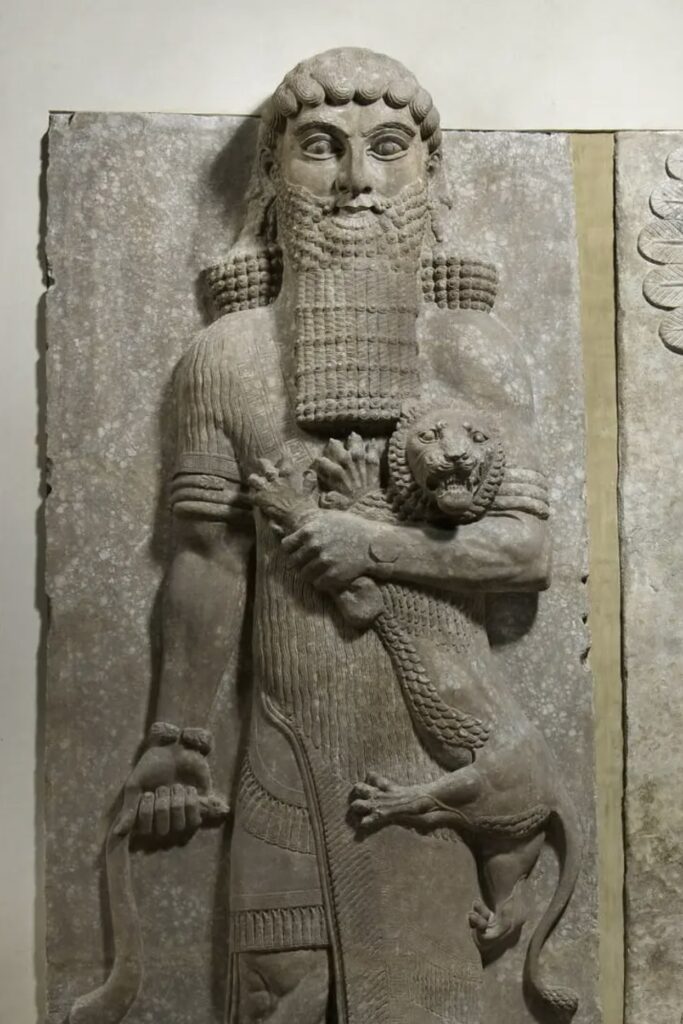
The Epic of Gilgamesh: An Overview
The Epic of Gilgamesh is one of the earliest and most significant literary works in human history. It originated in ancient Mesopotamia, specifically from the Sumerian city-state of Uruk, which is in present-day Iraq. The epic is believed to have been composed around 2100 BCE, although the story itself likely evolved over centuries from oral traditions. It is written in cuneiform script on clay tablets, and it has been preserved in various versions across different Mesopotamian cultures, including Akkadian, Babylonian, and Assyrian.
The Epic of Gilgamesh is a rich narrative that combines mythology, history, and poetic elements to explore deep human themes such as friendship, the nature of mortality, and the quest for eternal life. The main character, Gilgamesh, is a historical figure—a king of Uruk—who over time became mythologized into a demigod in the stories.
The Plot of the Epic
The epic is divided into several tablets, each detailing different parts of Gilgamesh’s journey. Below is a summary of the main events:
- Gilgamesh’s Tyranny and Enkidu’s Creation:
The epic begins with a description of Gilgamesh as a powerful but oppressive king of Uruk. The gods, responding to the prayers of his people, create Enkidu, a wild man of the wilderness, to challenge Gilgamesh’s power. Enkidu is initially a wild, uncivilized man, but he is tamed by a temple prostitute, Shamhat, who introduces him to human society. - The Friendship of Gilgamesh and Enkidu:
After an intense battle, Gilgamesh and Enkidu become close friends. Their friendship is a central theme of the epic, highlighting the human need for companionship. - The Journey to the Cedar Forest:
Seeking to make a name for themselves, Gilgamesh and Enkidu embark on a journey to the Cedar Forest to confront Humbaba, the monstrous guardian of the forest. They successfully kill Humbaba, which angers the gods, particularly Enlil, the god of wind and earth. - The Death of Enkidu:
The gods decide to punish Gilgamesh for his hubris by killing Enkidu. Enkidu falls ill and dies, leaving Gilgamesh devastated. His death confronts Gilgamesh with the reality of mortality, leading him to embark on a quest to find the secret of eternal life. - The Quest for Immortality:
Gilgamesh’s journey takes him to the ends of the earth in search of Utnapishtim, the only human granted immortality by the gods after surviving a great flood (a narrative similar to the Biblical flood). Along the way, he meets various divine beings who offer him wisdom, but he ignores much of their advice, driven by his fear of death. - Meeting Utnapishtim:
Utnapishtim recounts the story of the flood and explains to Gilgamesh that immortality is reserved for the gods. He offers Gilgamesh a chance to achieve immortality by staying awake for six days and seven nights, but Gilgamesh fails the test. Utnapishtim then tells Gilgamesh about a plant that can restore youth, but Gilgamesh loses it to a serpent on his journey back home. - Return to Uruk:
Gilgamesh returns to Uruk, having failed to secure immortality, but with a newfound understanding of his mortality. He comes to appreciate his role as a king and the legacy he will leave behind, symbolized by the great walls of Uruk that he built.
Discovery and Reconstruction of the Epic
Early Discoveries
The modern discovery of the Epic of Gilgamesh began in the mid-19th century, during a period of intense archaeological exploration in the Middle East. The most significant early discovery was made by George Smith, an assistant at the British Museum. In 1872, while studying a collection of cuneiform tablets from the ancient Assyrian city of Nineveh, Smith identified a fragment of the epic that included a story remarkably similar to the biblical account of the flood.
Smith’s discovery was a major breakthrough in Assyriology, the study of ancient Mesopotamian civilizations. The flood story on the tablet he found linked the epic to other ancient Near Eastern literature and sparked widespread interest in finding more pieces of the poem.
Subsequent Discoveries and Piecing Together
Following Smith’s discovery, archaeologists and scholars embarked on a quest to uncover more tablets related to the Epic of Gilgamesh. Excavations in Mesopotamia, particularly at sites like Nineveh and Uruk, yielded thousands of cuneiform tablets, many of which contained portions of the epic.
However, the process of piecing together the epic was extremely challenging due to the fragmented and scattered nature of the tablets. The epic was not preserved as a single, coherent document but rather as numerous fragments found in different locations, often written in different dialects and versions.
Over the next century, scholars meticulously worked to identify and translate these fragments, gradually reconstructing the epic. This work involved not only archaeology but also philology—the study of languages and texts—to understand the cuneiform script and the variations in the narrative.
Role of Artificial Intelligence
In the 21st century, the advent of artificial intelligence (A.I.) has dramatically accelerated the process of piecing together the Epic of Gilgamesh. A project known as Fragmentarium, led by Enrique Jiménez at the Ludwig Maximilian University of Munich, uses machine learning to analyze and match digitized images of tablet fragments. This technology allows researchers to identify matching fragments much faster than traditional methods.
Since the project began, over 1,500 new fragment matches have been discovered, including significant new lines of the Epic of Gilgamesh. These discoveries have not only filled in missing parts of the epic but have also provided new insights into the characters, themes, and structure of the story.
Significance of the Epic
The Epic of Gilgamesh is more than just an ancient story; it is a profound exploration of human existence. Its themes of friendship, loss, the fear of death, and the search for meaning are universal and timeless. The epic also offers a glimpse into the worldview of the ancient Mesopotamians, reflecting their religious beliefs, societal values, and concerns about mortality and legacy.
Moreover, the epic’s discovery and subsequent study have had a lasting impact on the fields of archaeology, literature, and history. It has helped scholars understand the connections between ancient Near Eastern cultures and has influenced modern literature, philosophy, and psychology.
The Epic of Gilgamesh continues to captivate readers and scholars alike, not only for its literary merits but also for what it reveals about the ancient world and the enduring nature of human concerns. With the aid of modern technology, more of the epic is being uncovered, ensuring that its story continues to be told and understood by future generations.
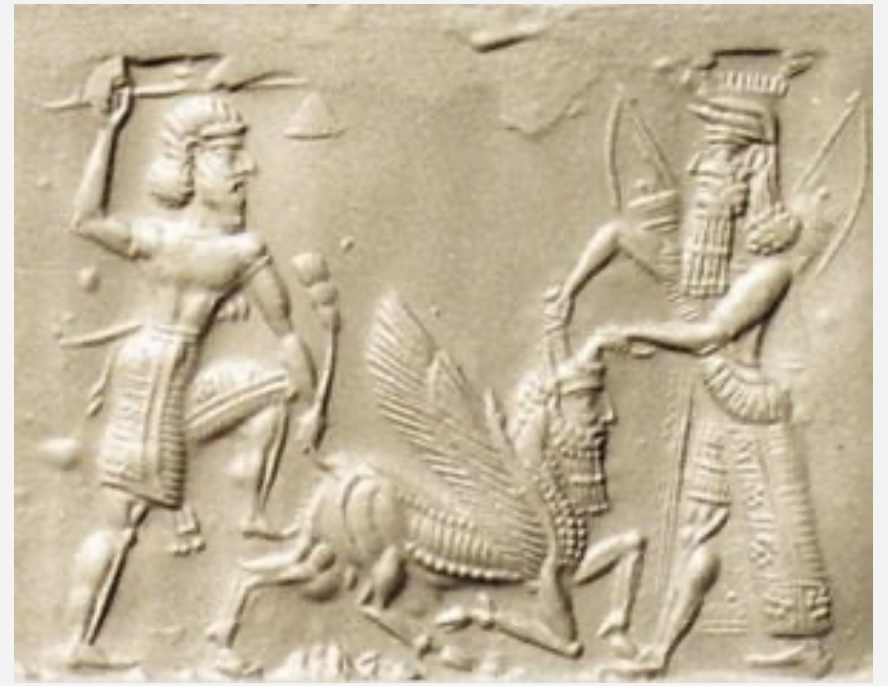
Q&A
What is the Epic of Gilgamesh?
The Epic of Gilgamesh is one of the oldest known literary texts in the world, dating back over 3,000 years. It is a Mesopotamian poem that tells the story of Gilgamesh, a demigod king, and his adventures with his companion, Enkidu. The epic explores themes of friendship, mortality, and the quest for immortality.
Who was George Smith, and what was his role in the discovery of the Epic of Gilgamesh?
George Smith was a British Museum employee who, in 1872, discovered a fragment of the Epic of Gilgamesh. His work identified a portion of the story that resembled the biblical flood narrative, which led to increased interest in the ancient text. Smith dedicated his life to searching for more fragments of the epic until his death in 1876.
How has artificial intelligence (A.I.) transformed the study of the Epic of Gilgamesh?
A.I., through the Fragmentarium project, has significantly accelerated the process of matching fragmented cuneiform tablets. By using machine learning, researchers can analyze and piece together these ancient fragments much faster than traditional methods, leading to new discoveries and insights into the Epic of Gilgamesh.
What is the Fragmentarium project?
The Fragmentarium project, led by Enrique Jiménez, is an initiative that uses A.I. to match and analyze fragments of ancient cuneiform tablets. The project has led to the discovery of over 1,500 new fragment matches, including important new lines of the Epic of Gilgamesh.
What are some of the new discoveries made through the Fragmentarium project?
New fragments discovered through the project have added over 100 lines to the Epic of Gilgamesh. These include details about the characters and events, such as a journey to Nippur by Gilgamesh and Enkidu, and a prayer by Gilgamesh’s mother to the sun god.
Why is the Epic of Gilgamesh significant in literary history?
The Epic of Gilgamesh is significant because it is one of the earliest known works of literature. It provides valuable insights into ancient Mesopotamian culture and continues to influence modern literature and storytelling with its timeless themes.
What challenges do translators face with the Epic of Gilgamesh?
Translators face challenges due to the ongoing discovery of new fragments, which can change the understanding of the text. The text evolves with each new discovery, making it difficult to create a definitive translation.
What is the future of Gilgamesh studies with the use of A.I.?
The future of Gilgamesh studies looks promising with the continued use of A.I. Scholars anticipate more discoveries that will fill in the gaps of the epic, offering a more complete and nuanced understanding of the text and the culture that produced it.
How does A.I. contribute to the broader study of ancient Mesopotamian texts?
A.I. helps researchers analyze large amounts of fragmented texts that would be impossible to study manually. This technology allows scholars to draw connections between different texts, offering new insights into the daily life, culture, and literature of ancient Mesopotamia.
What are the broader implications of using A.I. in the humanities?
The use of A.I. in the humanities, particularly in the study of ancient texts, shows how technology can overcome limitations like the scarcity of experts and the vastness of data. It allows for more efficient research and can lead to interdisciplinary collaborations that enhance our understanding of history and culture.
